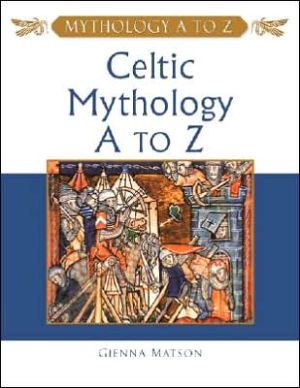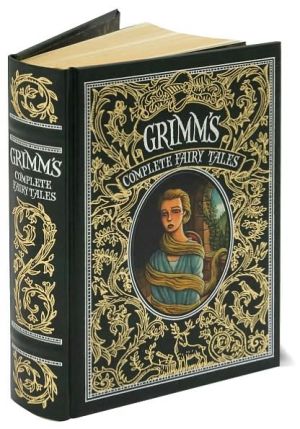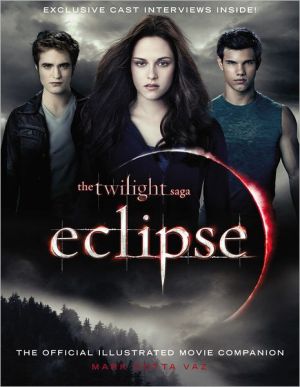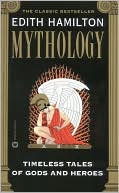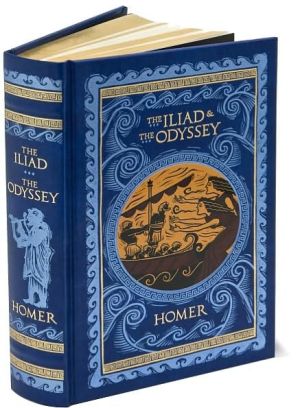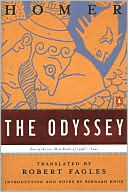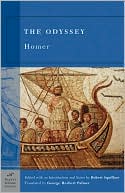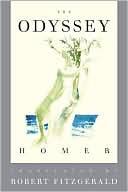Celtic Mythology a to Z
Designed specifically for young readers, the Mythology A to Z series explores the world's most important myths and legends in an accessible and entertaining manner. Each volume includes vividly written entries on the major figures, places, stories, objects, and themes of a given mythology. In some Celtic tales, the hero survives for hundreds of years in order to preserve the story of his people for future generations. Similarly, despite limited written records and the conversion of pagan...
Search in google:
Designed specifically for young readers, the Mythology A to Z series explores the world's most important myths and legends in an accessible and entertaining manner. Each volume includes vividly written entries on the major figures, places, stories, objects, and themes of a given mythology. In some Celtic tales, the hero survives for hundreds of years in order to preserve the story of his people for future generations. Similarly, despite limited written records and the conversion of pagan Celts to Christianity, myths of these fascinating people survive today, giving modern readers a glimpse of the world as the Celts saw it. Celtic Mythology A to Z presents this mythological world, in which male and female warriors, kings, queens, and other mortals are divided only narrowly from the gods, goddesses, divine beauties, and dead heroes of the supernatural Otherworld. Containing 40 illustrations, a map, a time line, a bibliography, an index, and extensive cross-references, Celtic Mythology A to Z is a comprehensive and accessible reference guide for anyone interested in learning more about Celtic myths, traditions, and beliefs. Patti Sylvester Spencer - VOYA At a recent book conference, a new-to-fantasy ninth grader commented, "Yeah, the story was okay, but the writer can't spell. Did you notice the names? Cwn Annwfn, Sceolang, Pwyll." Here was a reader who truly needed access to Matson's work. This new series provides a dictionary-like approach to mythological reference materials. Seven volumes (from Chinese to Egyptian mythology, from Norse to Native American, etc.) include 300 to 400 entries each, identifying and explaining pantheons and places. Both of the volumes reviewed here, Celtic Mythology and African Mythology, give informative, albeit necessarily superficial, historical and geographical context. While the sheer barrage of proper nouns is overwhelming, several dozen black-and-white drawings or photos of artifacts illustrate the two-columned text. Individual entries do not indicate pronunciation, but general pronunciation guides for languages are included, along with broad timelines. For world mythology projects, students might use these volumes to clarify ideas or names discovered in other materials, but some might find Internet resources more colorful, inviting, and thorough (especially sites with hyperlinks). The volumes here, however, could prove especially useful in exploring and comparing literary, historical, or cultural symbolism. What does a tree or lion signal across cultures? These books provide answers. How reassuring it is just to see these volumes on a reference shelf and recognize that the Greek and Roman pantheons were not alone. (Mythology A to Z). 2004, Facts on File, 114p.; Index. Illus. Photos. Maps. Biblio. Chronology., PLB $35.. Ages 11 to Adult.
AcknowledgmentsivIntroductionvTime Line for Celtic CulturexiiiMap of the Celtic World, ca. 450 B.C.xivA-to-Z Entries1Selected Bibliography109Index111
\ VOYAAt a recent book conference, a new-to-fantasy ninth grader commented, "Yeah, the story was okay, but the writer can't spell. Did you notice the names? Cwn Annwfn, Sceolang, Pwyll." Here was a reader who truly needed access to Matson's work. This new series provides a dictionary-like approach to mythological reference materials. Seven volumes (from Chinese to Egyptian mythology, from Norse to Native American, etc.) include 300 to 400 entries each, identifying and explaining pantheons and places. Both of the volumes reviewed here, Celtic Mythology and African Mythology, give informative, albeit necessarily superficial, historical and geographical context. While the sheer barrage of proper nouns is overwhelming, several dozen black-and-white drawings or photos of artifacts illustrate the two-columned text. Individual entries do not indicate pronunciation, but general pronunciation guides for languages are included, along with broad timelines. For world mythology projects, students might use these volumes to clarify ideas or names discovered in other materials, but some might find Internet resources more colorful, inviting, and thorough (especially sites with hyperlinks). The volumes here, however, could prove especially useful in exploring and comparing literary, historical, or cultural symbolism. What does a tree or lion signal across cultures? These books provide answers. How reassuring it is just to see these volumes on a reference shelf and recognize that the Greek and Roman pantheons were not alone. (Mythology A to Z). 2004, Facts on File, 114p.; Index. Illus. Photos. Maps. Biblio. Chronology., PLB $35.. Ages 11 to Adult. \ —Patti Sylvester Spencer\ \ \ \ \ School Library JournalGr 4-9-Handsomely designed, full-color covers beckon readers to explore mythological worlds. While each title is authored by a different person, these volumes are of consistent high quality. Alphabetically arranged entries describe historical and mythological figures, places, objects, themes, and story cycles. Most articles are short, although some include simple versions of myths and folktales. Alternate spellings of names are offered and topics are well connected by cross-references. Each title includes a simple map of the appropriate geographic area and an introduction that provides cultural and historical background. The first two books also offer a time line and pronunciation assistance. Since African Mythology covers the entire continent, a list of countries with their tribal regions is included. Chinese Mythology has an appended alphabetical listing of "Important Gods and Mythic Figures." The inviting formats feature generous white space and large headings plus numerous drawings, reproductions, and sharp halftone photographs. The clarity of wording, well-chosen bibliographic sources, and detailed indexes make these series titles excellent resources to accompany the many anthologies of myths and legends already in library collections.-Ann G. Brouse, Steele Memorial Library, Elmira, NY Copyright 2004 Reed Business Information.\ \
